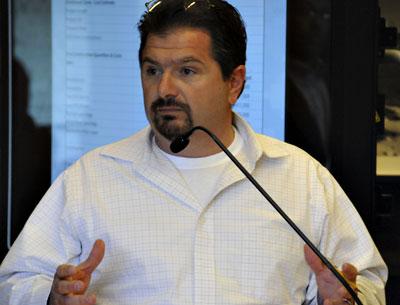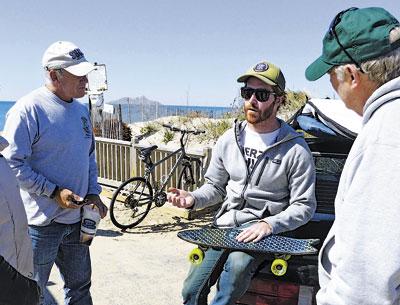Caution Urged in Still-Cold Waters
Caution Urged in Still-Cold Waters

Spring temperatures are finally here, and Memorial Day weekend is only a few weeks away, but that does not mean the water is warm enough for any prolonged exposure. The Coast Guard cautions boaters around this time every year not to be fooled by the warmer air temperatures and to be very careful when venturing off dry land.
The Montauk Coast Guard has not had any water-related incidents so far this season. "Knock on wood, we've been pretty lucky this year. We haven't had any cases, but the potential is there. Just look at the amount of paddleboards on top of trucks," Jason Walter, chief of the Montauk station, said on Monday. "Even though the air temperature might be 70 and even 80, if you fall in the water, even if you have a life jacket on, your survivability is limited."
Hypothermia, which occurs when the body's core temperature falls below 95 degrees, sets in quickly, and can lead to death, as it affects the body's most vital organs, such as the brain, heart, and lungs. The loss of body heat occurs 25 times faster in cold water than in cold air.
Chief Walter said there are a lot variables, including a person's physical condition and size, however, "within 15 to 20 minutes, you start losing the motor skills in your hands and feet."
Nearby this past week, Coast Guard Station Shinnecock and Southampton bay constables kept busy with water-related accidents off the East End and Connecticut. One man lost his life.
The Riverhead Police Department received a call Sunday from someone aboard a sailboat that was taking on water about three miles north of Jacobs Point off Mattituck. Ciro Stellgas, 59, from Selden, was found dead on Monday after he and his boat, a 26-foot fiberglass sailboat went missing.
There were happier endings in three other incidents. Southampton Bay Constables rescued a 60-year-old bayman who stood on top of a fish trap net about 750 from shore after he slipped from the boat while working his traps and then lost contact with the boat, which drifted across Tiana Bay.
On the morning of April 30, a 62-year-old man fell in the water while getting off his boat at the Westhampton Beach Bath and Tennis Club. He yelled for help for about an hour before passersby called police. Westhampton Beach police helped him out of 43-degree water and he was taken to the hospital with symptoms of hypothermia, Southampton Town police said.
Over in Connecticut on Sunday, the Coast Guard rescued a 12-year-old girl whose canoe had capsized near Ocean Beach in New London. The girl was not wearing a life jacket and was with her dog. The John H. passenger ferry assisted and quickly deployed a life ring to the girl, who was showing signs of shock and hypothermia. Station New London's boat crew rescued her and a good Samaritan located the dog on shore.
"One of the key things to keep in mind is that even if it's warm out, the water is still cold," Walt Taylor, the 1st Coast Guard District's Recreational Boating Safety specialist, said in a statement from the Coast Guard. "When a person falls in cold water, their body responds to the initial shock with an instantaneous gasp for air, which, if their head is underwater, may cause the person to swallow water and drown."
Wearing a lifejacket will help keep your head above water in the event of an emergency.
"By the time you fall in the water, it's probably too late to try and put on a lifejacket," said Mr. Taylor. "It only works if you wear it."
Chief Walter said the Coast Guard is also asking anyone who owns a personal watercraft to put something on it that provides a name and phone number. The Coast Guard has specially-made waterproof stickers available at any of its stations.
"These things wash up on the beach. When we come upon them in the water we have to treat them as missing persons," he said. Unlike boats, which have registrations, kayaks, paddleboards, and canoes cannot be traced.







